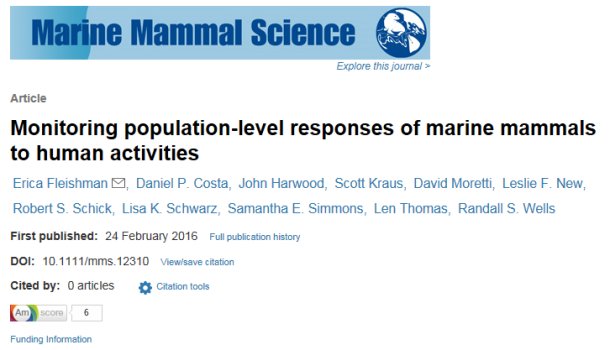New publication - Monitoring population-level responses of marine mammals to human activities
Posted on September 9, 2016
Abstract
We provide guidance for monitoring whether human activities affect the physiology or behavior of marine mammals and, if so, whether those effects may lead to changes in survival and reproduction at the population level. We suggest that four elements be included in designing and implementing such a monitoring program. The first is development of a theory of change: a set of mechanistic hypotheses that outline why a given activity might be expected to have one or more measurable effects on individuals and populations, and ideally the magnitude, timing, and duration of the effects. The second element, definition of biologically meaningful effect sizes, ultimately facilitates the development of a monitoring program that can detect those magnitudes of effect with the desired levels of precision. The third element, selection of response variables for monitoring, allows inference to whether observed changes in the status of individuals or populations are attributable to a given activity. Visual observations, passive acoustic and tagging instruments, and direct physical measurements all can provide data that facilitate quantitative hypothesis testing. The fourth element is specification of the temporal sequence of monitoring. These elements also can be used to inform monitoring of the responses of other taxonomic groups to human activities.


